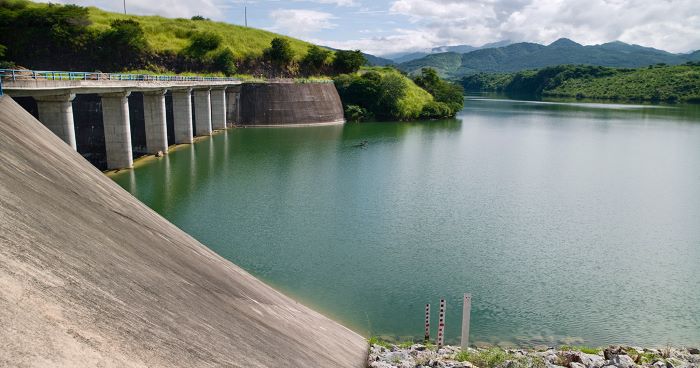Can Hydroelectric Power Be the Key Sustainable Energy Solution?

The rise of global temperature, primarily caused by human activities like burning fossil fuels, is posing a dire threat to our planet. This warming trend disrupts weather patterns and intensifies extreme weather events. These impacts are already being felt worldwide, jeopardising food security, ecosystems, and human health.
This has made the world urgently seek a clean and reliable energy source. Hydropower, harnessing the power of moving water, has emerged as a frontrunner in the race for a sustainable energy solution.
Hydropower boasts undeniable advantages. Unlike fossil fuels, it generates electricity with minimal greenhouse gas emissions. The energy source, flowing water, is constantly replenished by the natural water cycle, making it a renewable resource. But is it truly the key to unlocking a sustainable energy solution?
Introduction to Hydropower
Hydroelectric power utilises the energy of flowing water to generate electricity. It relies on the gravitational force of water bodies, such as rivers and dams, to turn turbines connected to generators, converting kinetic energy into electrical energy. Unlike fossil fuels, which emit harmful pollutants during combustion, hydroelectric power produces minimal greenhouse gas emissions, making it a cleaner alternative for power generation.
The Benefits of Hydropower
Hydropower boasts undeniable advantages. Unlike fossil fuels, it generates electricity with minimal greenhouse gas emissions. Here are some reasons why you should consider Hydropower as a sustainable energy solution:
- Renewable and Clean: The energy source, flowing water, is constantly replenished by the natural water cycle.
- Flexibility is Key: Hydropower plants can be ramped up or down quickly, acting as a reliable balancing mechanism for variable sources like solar and wind.
- Multiple Benefits: Hydropower projects often create large reservoirs that provide opportunities for Irrigation, Flood control, Recreation, and Pumped storage (storing excess energy during low-demand periods).
Challenges on the Path to Sustainability
The path to sustainable hydropower is not without its challenges. Building large dams, a mainstay of traditional hydropower, can have significant environmental impacts:
- Ecosystem Disruption: Dams disrupt river ecosystems, impacting fish populations and aquatic habitats.
- Community Displacement: Dam construction can displace communities living near rivers.
- Altered Water Flow: Dams can alter downstream water flow, impacting ecosystems and agriculture.
- Greenhouse Gas Emissions: The fragmenting of organic matter trapped in reservoirs can release methane, a potent greenhouse gas.
How to Achieve Sustainable Hydropower
Sustainable practices, along with cutting-edge technologies, can minimise hydropower’s environmental footprint while maximising its clean energy generation capacity, making it a sustainable energy solution.
Here’s a multi-pronged approach for achieving sustainable hydropower:
- Prioritise Smaller-Scale Projects: Focus on building smaller dams with eco-friendly designs that cause minimal disruption to ecosystems and communities.
- Modernise Existing Infrastructure: Implement upgrades to existing dams to improve efficiency, reduce methane emissions, and enhance downstream water quality.
- Collaboration: Foster collaboration between stakeholders – governments, energy companies, environmental groups, and local communities – to ensure responsible planning and implementation of hydropower projects.
- Fish Passage Technologies: Technological advancements such as fish-friendly turbine designs and improved sediment management techniques can help mitigate the environmental effects of hydroelectric power generation.
- Utilise Hydroelectric Power: Integrating hydroelectric power with other renewable energy resources through hybrid energy systems and energy storage technologies can enhance overall system reliability and resilience.
- Small Hydropower Plants: Small hydropower plants with minimal environmental impact are gaining traction. These “run-of-the-river” systems utilise the natural flow of water without requiring large dams.
Achieving a Sustainable Energy Future Through Hydropower
While hydroelectric power holds great promise as a sustainable energy solution, its full potential can only be realised through careful planning, innovative technologies, and proactive environmental stewardship. By addressing environmental concerns, promoting social equity, and adopting technological innovation, hydroelectric power can play a pivotal role in transitioning towards a cleaner, greener energy future.
The future of hydropower lies in adopting innovation and responsible development. Smaller-scale, eco-friendly dams, coupled with advancements in run-of-the-river plants and fish passage technologies, offer promising solutions. Modernising existing infrastructure to improve efficiency and minimise methane emissions is also crucial.










